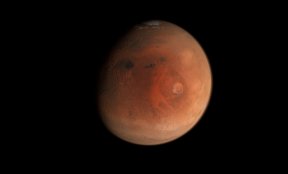We have rovers on Mars. Perseverance (or Percy, if you're on nickname terms) landed there just a few weeks ago to join Curiosity. And don't forget about Spirit and Opportunity (or Oppy, if you like) which also spent years traversing the Martian wastelands. Then just yesterday we saw the launch and successful landing of Starship SN10, a spaceship that will (supposedly) be capable of carrying humans to Mars. Sure, it exploded in a huge fireball shortly after landing, but, details. Anyway, the point is that we are closer than ever to getting astronauts to Mars. And being able to feed them is going to be a problem.
The issue is that we can't carry all the food they'll need. So, we are going to have to grow it in space. Researchers at the University of Southern Queensland have been thinking through the challenges involved, and are collaborating with NASA to develop synthetic microbiomes that help plants grow in hostile environments.
On Earth, plant microbiomes are made up of different bacteria and fungi that provide nutrients and support growth. We're going to need that same support system in space. By producing a synthetic microbiome where the composition is selected for a specific environment, we might be able to get crops to thrive in extraterrestrial settings.
And while Mark Watney may have managed to grow his own potatoes on Mars, it's not a simple task even if you put aside having to deal with your own waste. To kill pathogens Watney had to freeze dry and then rehydrate it before fertilizing the potatoes he had planted. Then you have the perchlorates (typically used in rocket fuel on Earth) in the Martian soil to deal with. Anyway, where do you think Watney's potatoes came from? They'd have been grown enroute, in space.
Of course, food is just one impediment to our long-term survival on Mars. The planet is -63°C on average and there's no breathable atmosphere. Elon has suggested we nuke the planet – 10,000 warheads set off over the poles should heat it up a bit (maybe). But it's more likely that we'd live in biodomes, each with its own small but liveable biosphere. And guess what, we've already tried that. In the 1990s the University of Arizona ran two experiments in a sealed facility called Biosphere 2. It had seven different biomes, including rainforest, wetlands, and a coral reef. The results? Not encouraging. Oxygen levels dropped, food ran low, animals and plants died, and tensions rose amongst the human participants.
All of which says one thing. Living on Mars is not going to be easy. Growing dinner might be the easy part.




